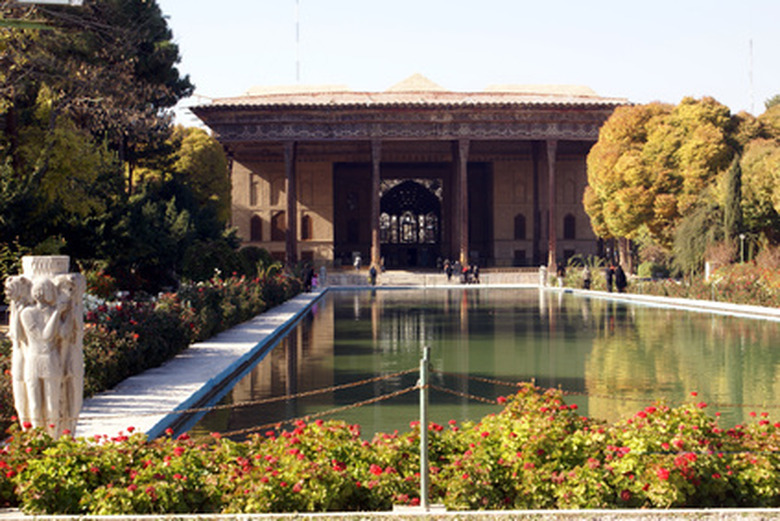How To Add Chemicals To A Well Water Filled Pool
In rural areas where homes are not served by municipal water supplies, swimming pools may need to be filled with water drawn from drilled wells. This is not a problem, generally, and most maintenance tasks are largely the same whether your pool is filled with city water or well water. However, it's not unusual for well water to contain a high level of minerals and metals. Minerals such as iron, magnesium, copper and calcium can cause your pool water to appear cloudy, yellow or even brown.
Proper chemical treatment of your pool will eliminate the problem. Learn how to test and chemically treat a pool filled with well water.
Things Needed
-
Four-way test strips
-
Soda ash
-
Muriatic acid
-
Sodium bicarbonate
-
Chlorine
-
Bucket
-
Granular chlorine neutralizer
-
Chelating agent
-
Pool vacuum
Tip
Your pool water should have a pH between 7.4 and 7.6. The alkalinity should range from 80 to 150 parts per million, and "free chlorine" should be somewhere between 1.0 and 3.0 ppm. If your pool is filled with well water, test it twice per week to make sure the chemical levels of the water stay balanced. All pool chemicals can be purchased from pool stores or online.
1. Test Chlorine and pH
Dip a four-way test strip into your pool water for three to four minutes. Pull the test strip from the pool water and immediately read the results. It will show the pH, free chlorine and alkalinity of your pool water.
2. Adjust pH
Adjust the pH of your pool water according to the test strip results. You can increase the pH of the water by sprinkling the appropriate amount of soda ash directly into your pool. Decrease your water's pH level by mixing the appropriate amount of muriatic acid with 10 parts of water and then pouring the mixture along the inside edge of your pool.
3. Adjust Alkalinity
Adjust the pool water alkalinity up or down according to the pool test strip results. Increase it by simply adding the appropriate amount of sodium bicarbonate, or baking soda. Decrease the alkalinity of the water by mixing the appropriate amount of muriatic acid with water and carefully pouring it around the edge of the swimming pool.
4. Adjust Free Chlorine
Adjust the free (available) chlorine level of your pool water according to the results from the pool test strip. Raise the level of free chlorine by adding the appropriate amount of liquid chlorine to a bucket of water and pouring it directly into your pool water. Although it is unusual for there to be too much chlorine in well water, if necessary you can reduce the amount of free chlorine by sprinkling a granular chlorine neutralizer into the water — 6 ounces of neutralizer for every 10,000 gallons of pool water.
5. Remove Metals
Add a chelating (sequestering) agent, to your pool water to help clump the dissolved metals together. A chelating agent is a chemical compound that reacts with other elements to form more stable complex molecules. Then remove the clumps of metals from your pool with a pool vacuum.
